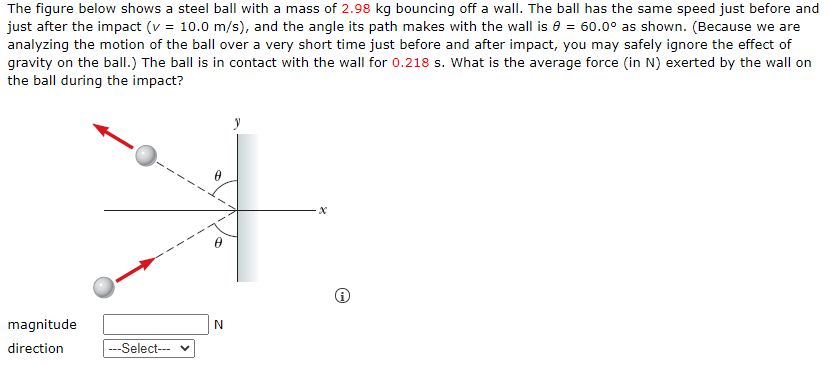The figure below shows a steel ball with a mass of 2.98 kg bouncing off a wall. The ball has the same speed just before and just after the impact (v = 10.0 m/s), and the angle its path makes with the wall is θ = 60.0∘ as shown. (Because we are analyzing the motion of the ball over a very short time just before and after impact, you may safely ignore the effect of gravity on the ball. ) The ball is in contact with the wall for 0.218 s. What is the average force (in N ) exerted by the wall on the ball during the impact? (i) magnitude N direction
